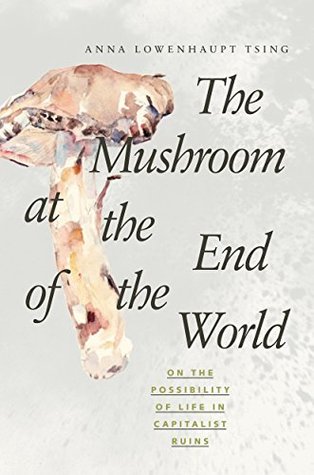More on this book
Community
Kindle Notes & Highlights
The conversion of indigenous knowledge into capitalist returns is salvage accumulation. So too is the conversion of whale life into investments.
Wal-Mart pioneered the required use of universal product codes (UPCs), the black-and-white
Savage and salvage are often twins: Salvage translates violence and pollution into profit.
One way of thinking about this is through scalability, the technical feat of creating expansion without the distortion of changing relations.
The legibility of inventory allows scalable retail expansion for Wal-Mart without requiring that production be scalable. Production is left to the riotous diversity of nonscalability, with its relationally particular dreams and schemes. We know this best in “the race to the bottom”:
As in Heart of Darkness, unregulated production is translated in the commodity chain, and even reimagined as progress.
In her insightful comparison between the supply chains for French green beans (haricots verts) that link West Africa with France and East Africa with Great Britain, respectively, geographer Susanne Freidberg offers a sense of how supply chains, drawing variously on colonial and national histories, may encourage quite different economic forms.
But following Gibson-Graham to call this politics “postcapitalist” seems to me premature. Through salvage accumulation, lives and products move back and forth between noncapitalist and capitalist forms; these forms shape each other and interpenetrate. The term “pericapitalist” acknowledges that those of us caught in such translations are never fully shielded from capitalism;
Most critics of capitalism insist on the unity and homogeneity of the capitalist system;
many, like Michael Hardt and Antonio Negri, argue that there is no longer a space outside of capitalism’s empire.
My goal in bringing up Gibson-Graham and Hardt and Negri is not to dismiss them; indeed, I think they are perhaps the early twenty-first century’s most trenchant anticapitalist critics.
Is capitalism a single, overarching system that conquers all, or one segregated economic form among many?
Between these two positions, we might see how capitalist and noncapitalist forms interact in pericapitalist spaces.
But they see such forms as alternatives to capitalism.
Instead, I would look for the noncapitalist elements on
which capitalism ...
This highlight has been truncated due to consecutive passage length restrictions.
Women learn to sew growing up at home; salvage accumulation is the process that brings this skill into the factory to the benefit of owners.
It takes concrete histories to make any concept come to life.
Matsutake foraged and sold in pericapitalist performances become capitalist inventory as they are sent to Japan a day later. Such translation is the central problem of many global supply chains.
In the Pacific Northwest, the first exporters were Asian Canadians in Vancouver—and because of their precedent, most U.S. matsutake continue to be exported by their firms.
But the exporters—experts in fish, or fruit, or timber—knew nothing about how to get the mushrooms.
In North America, matsutake are scattered across enormous national (U.S.) or commonwealth (Canadian) forests.
Neither buyers nor bulkers could get beyond the already difficult exchange with Canadian exporters of Asian origin, for whom English was not often a first language.
As international matsutake commerce entered the twenty-first century, regularization was afoot in Japan.
The prices of Oregon matsutake in Japan became relatively stable—considering, of course, that matsutake is still a wild product with an irregular supply.
However, this stability was not reflected in Oregon, where prices continued to roller-coaster,
In the 1970s, Americans expected the globalization of capital to mean the spread of U.S. business standards all over the world. In contrast, Japanese traders had become specialists in building international supply chains and using them as mechanisms of translation to bring goods into Japan without Japanese production facilities or employment standards.
Because the place is self-consciously off the map, I decided to make up a name to protect people’s privacy,
Between 2004 and 2008, prices shifted between $2 and $60 per pound for the best mushrooms—and this range is nothing compared with earlier years.
But what is this freedom about which pickers spoke? The more I asked about it, the more unfamiliar it became to me. This is not the freedom imagined by economists,
This mushroomers’ freedom is irregular and outside rationalization; it is performative, communally varied, and effervescent.
Freedom is the negotiation of ghosts on a haunted landscape; it does not exorcise the haunting but works to survive and negotiate it with flair.
Donna Haraway, “Anthropocene, Capitalocene, Chthulucene: Staying with the Trouble,” presentation for “Arts of Living on a Damaged Planet,” Santa Cruz, CA, May 9, 2014, http://anthropocene.au.dk/arts-of-living-on-a-damaged-planet, argues that “Anthropocene” gestures to sky gods; instead, she suggests we honor the “tentacular ones”—and multispecies entanglements—by calling our era the Chthulucene. Indeed, Anthropocene calls up varied meanings, as the 2014 debate over plans for a “good” Anthropocene illustrated. See, for example, Keith Kloor, who embraces the Anthropocene through a “green
...more


